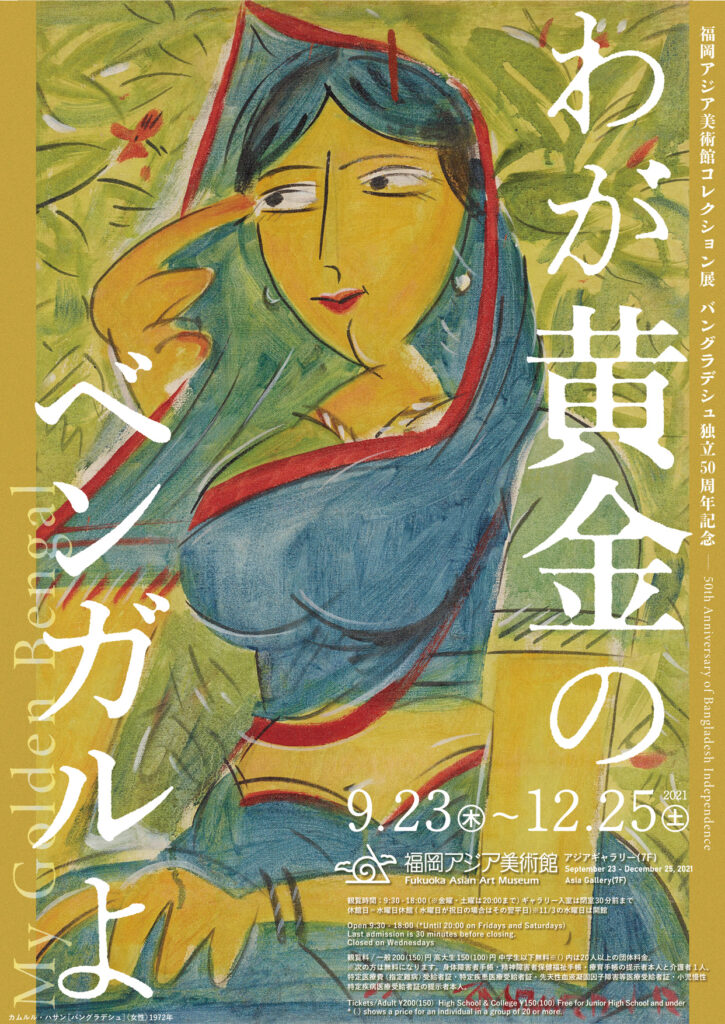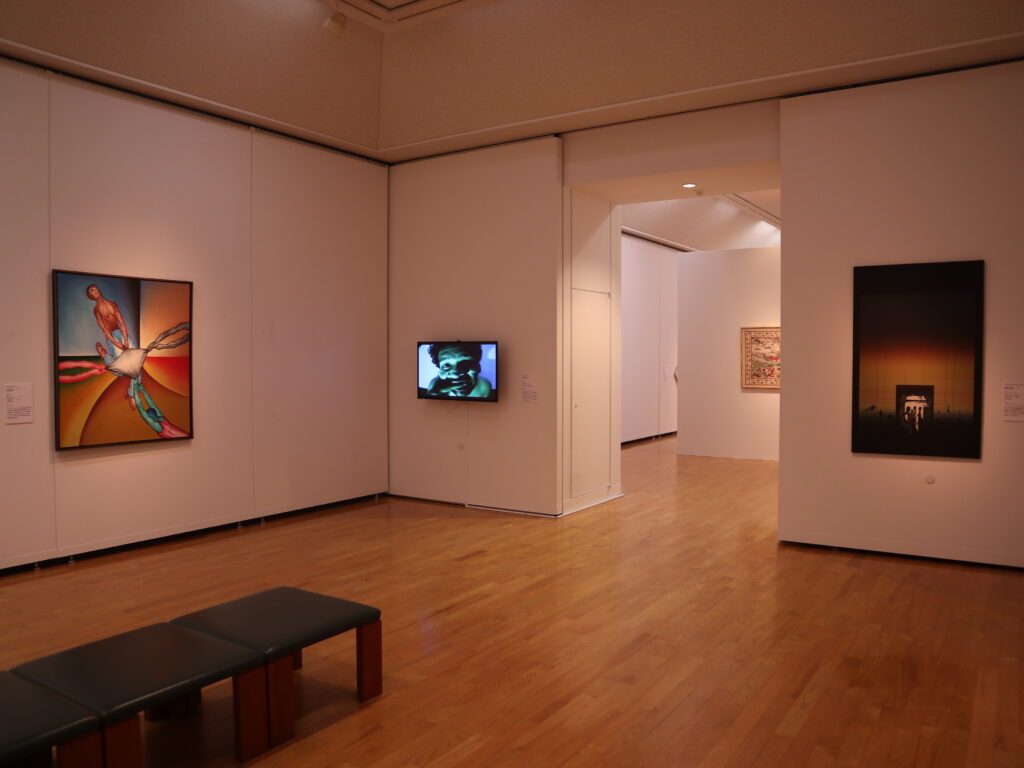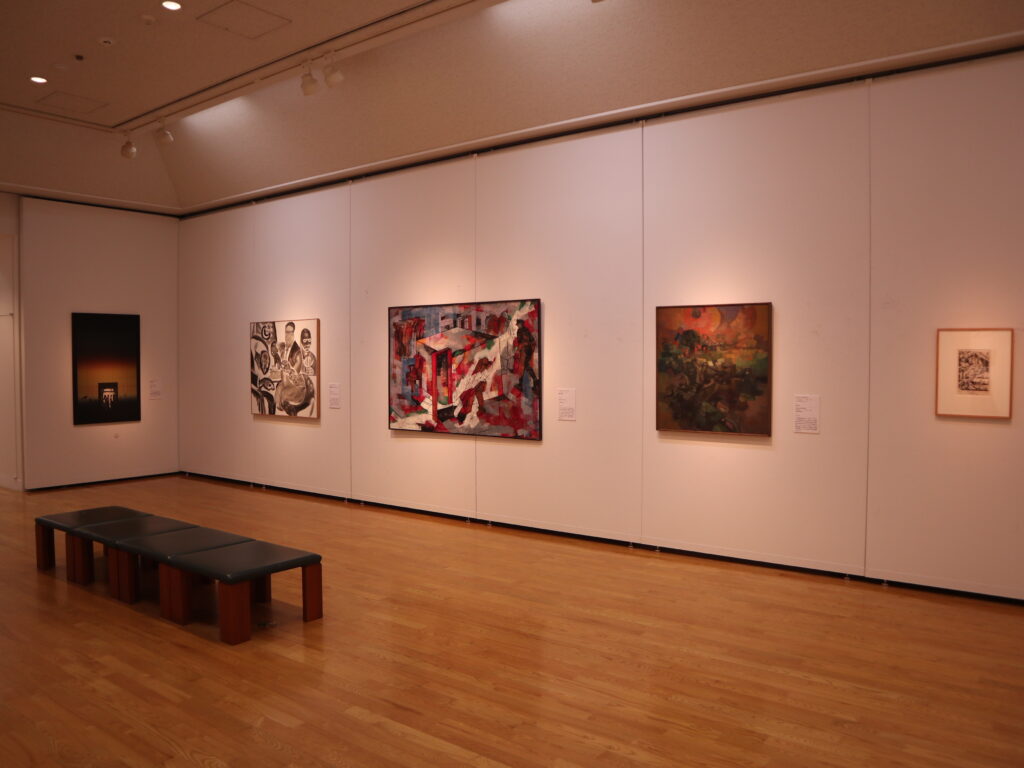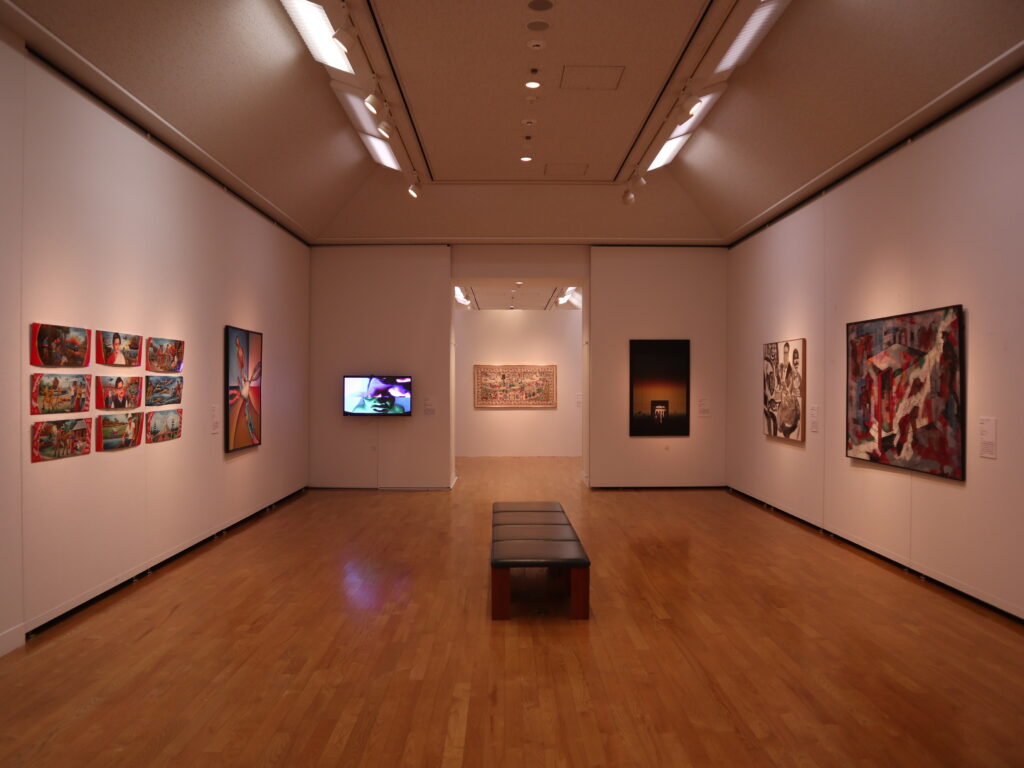
Quamrul Hassan (Bangladesh)
"Woman" 1972
My Golden Bengal — 50th Anniversary of Bangladesh Independence
- Period
- Sep 23, 2021 〜 Dec 25, 2021
- Venue
Fukuoka Asian Art Museum Asia Gallery
■ Intoroduction
This admiring phrase was coined by one of Bengal’s representative poets, Rabindranath Thakur. Perhaps, this would be a much better explanation about him: The first Asian to win the Nobel Prize in Literature, Rabindranath Tagore.
Tagore received the Nobel Prize in Literature for a collection of poems Gitanjali in 1913. Bengal, his birthplace, had not yet been divided into India and Bangladesh, and was a part of the British Raji in India at that time. With its rich nature and culture since ancient times, the people living in Bengal region were called Bengali. রবীন্দ্রনাথ ঠাকুর (Robindronath Thakur) is his original name in the Bengali language.
“My Golden Bengal” is composed with melodic rhythm by Gagan Harkara, a bard called Balu. The poem praising the great nature of Bengal was officially adopted as the national anthem of Bangladesh, which means “Land of Bengal,” and has been passionately inspiring the people devoting themselves to the nation.
Focusing on Bangladesh, which gained hard-fought independence in 1971, this exhibition traces the 50 years of art in this country, where hardships and joys of life are intertwined.
■ Independence and Endless Struggle
In 1947, two years after World War II, India and Pakistan split off from Indian Empire, which was colonized by the British. It also led the Bengal region to a complicated situation. The Hindu-majority West Bengal became a state of India, and the Muslim-majority East Bengal became a province of Pakistan called East Pakistan.
However, West Pakistan’s political and economic superiority swirled the dissatisfaction among the people in East Pakistan. One example was the Bengal language movement. The people in the East launched a mass protest against the adaptation of Urdu, the national language of the West, as an official language.
Furthermore, after the Bangladesh Awami League, the largest East Pakistani political party at that time, won the 1970 election, the conflict between East and West became more intensified. In March 1971, the Pakistan army invaded East Bengal, leading to the Bangladesh Liberation War. In December of the same year, with India’s military support, Bangladesh took advantage against the West Pakistan army and achieved the long-cherished dream of independence. However, the war also claimed many Bengali lives and left deep scars etched in the society.
■ Affluent Nature and Culture of Bengal
In “My Golden Bengal,” lyrics like “the fragrance of the mango tree” and “mature fields of paddy” praise the fertile land of Bengal. Golden Bengal, an embroidery work called Kantha, also depicts such sceneries. While the majority of people still live in rural areas, the urban areas, Dhaka, the capital in the center of the country, and Chittagong, the port city in the southeast, both have developed economically and culturally from old times.
In the field of art, abstract modernist paintings and socially critical realism paintings unique to Bangladesh emerged from art institutions such as Dhaka Art School (the predecessor of the Faculty of Fine Arts, University of Dhaka) established in 1948 and Institute of Fine Arts, University of Chittagong established in 1968. In addition to the above, Bangladesh’s diverse visual expressions, such as popular art represented by film and rickshaw painting, and the ordinary forms of terra cotta and pottery, still capture people’s hearts as a mirror of Bengali nature and society.
| Venue | Fukuoka Asian Art Museum Asia Gallery |
|---|---|
| Admission | Adult 200 JPY / High School&College 150 JPY / Free for Junior High School and Under |
| Works | 38 pieces. Painting, print, photography, sculpture, video and others. |
| Organiser | Fukuoka Asian Art Museum |
| Contact | Fukuoka Asian Art Museum Tel: 092-263-1100 |





